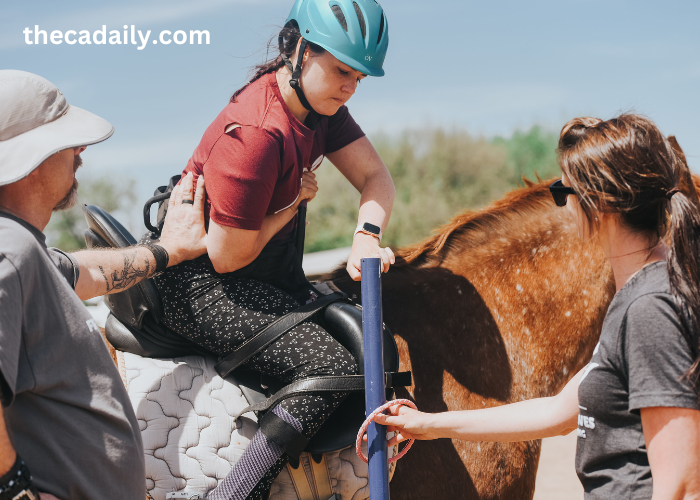Horseback riding, an age-old practice that transcends cultures and continents, offers more than just a means of transport or a leisurely activity. It is a powerful form of therapy, providing physical, emotional, and psychological benefits to those who engage with these majestic animals. The bond formed between horse and rider can lead to profound healing and personal growth, making horseback riding a unique and valuable therapeutic tool. Explore a wide range of online courses on casacourses. Enroll today to enhance your skills and knowledge in various fields.
Physical Benefits
One of the most immediate advantages of horseback riding is its impact on physical health. Riding a horse requires balance, coordination, and strength, engaging multiple muscle groups. The rhythmic motion of the horse can improve the rider’s core strength, posture, and flexibility. Therapeutic riding, often used for individuals with physical disabilities, helps improve motor skills, balance, and muscle tone. The warmth and movement of the horse’s body can relax tight muscles, making it particularly beneficial for those with conditions such as cerebral palsy, multiple sclerosis, and arthritis.
Emotional and Psychological Benefits
The psychological benefits of horseback riding are equally significant. Interacting with horses can reduce stress, anxiety, and depression. The presence of the horse, a non-judgmental and patient creature, can provide a sense of calm and comfort. The process of grooming, saddling, and riding a horse requires focus and mindfulness, which can be a meditative practice for many.
For individuals dealing with trauma, PTSD, or emotional difficulties, equine-assisted therapy offers a unique approach. Horses, being highly sensitive and intuitive animals, can mirror the emotions of the rider, providing immediate feedback and fostering self-awareness. This interaction can help individuals process their emotions and build trust, confidence, and self-esteem. The act of caring for a horse, establishing routines, and achieving riding goals can instill a sense of accomplishment and purpose.
Social Benefits
Horseback riding can also enhance social skills and foster a sense of community. Riding schools and therapeutic programs often involve group activities, encouraging social interaction and teamwork. This can be particularly beneficial for children and adults with social anxieties or autism spectrum disorders, as it provides a structured environment to practice communication and cooperation.
Therapeutic Riding Programs
Therapeutic riding programs, also known as equine-assisted activities and therapies (EAAT), are designed to harness the benefits of horseback riding for individuals with a variety of needs. These programs are facilitated by trained professionals, including physical therapists, occupational therapists, and mental health counselors, who tailor activities to meet the specific goals of each participant.
Organizations like the Professional Association of Therapeutic Horsemanship International (PATH Intl.) and Equine Assisted Growth and Learning Association (EAGALA) set standards and provide certification for therapeutic riding programs, ensuring safety and efficacy. These programs have been shown to significantly improve the quality of life for participants, offering a holistic approach to therapy that combines physical exercise, emotional support, and social interaction.
Conclusion
The therapeutic benefits of horseback riding are vast and varied, making it an invaluable tool for enhancing physical, emotional, and psychological well-being. The bond formed between horse and rider is a powerful conduit for healing and personal growth. As more people discover the transformative power of equine-assisted activities, horseback riding will continue to be a cherished and effective form of therapy. Whether for recreation or rehabilitation, the beauty of this unique bond offers a pathway to a healthier and more fulfilling life.


